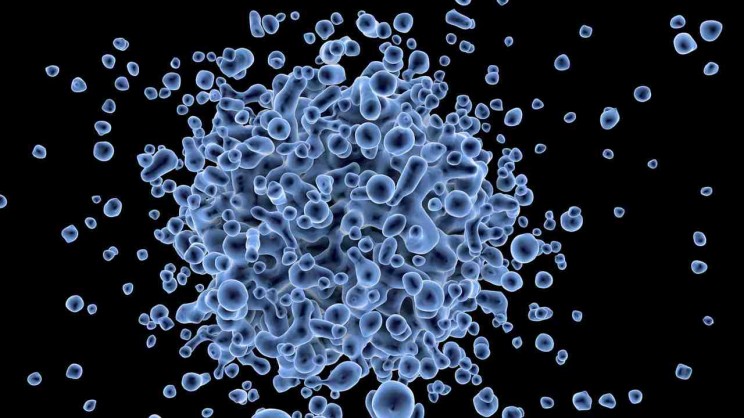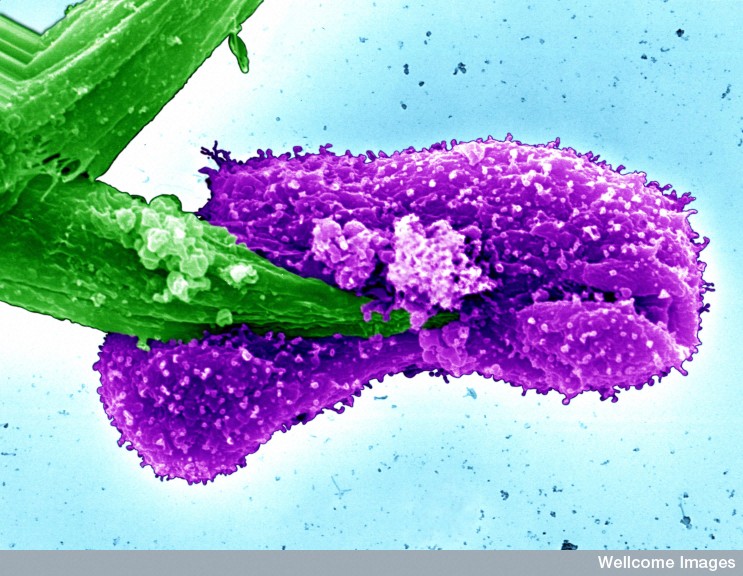By John Archibald
We humans have a love-hate relationship with bugs. I’m not talking about insects — although many of us cringe at the thought of them too — but rather the bugs we can’t see, the ones that make us sick.
Sure, microorganisms give us beer, wine, cheese, and yoghurt; hardly a day goes by without most people consuming food or drink produced by microbial fermentation. And we put microbes to good use in the laboratory, as vehicles for the production of insulin and other life-saving drugs, for example.
But microbes are also responsible for much of what ails us, from annoying stomach ‘bugs’ to deadly infectious diseases such as tuberculosis and plague. Bacteria and viruses are even linked to certain cancers. Bugs are bad; antibiotics and antivirals are good. We spend billions annually trying to rid ourselves of microorganisms, and if they were to all disappear, well, all the better, right?
This is, of course, nonsense. Even the most ardent germaphobe would take a deep breath and accept the fact that we could no more survive without microbes than we could without oxygen. No matter how clean we strive to be, there are 100 trillion bacterial cells living on and within our bodies, 10 times the number of human cells that comprise ‘us’. Hundreds of different bacterial species live within our intestines, hundreds more thrive in our mouths and on our skin. Add in the resident viruses, fungi, and small animals such as worms and mites, and the human body becomes a full-blown ecosystem, a microcosm of the world around us. And like any ecosystem, if thrown off-balance bad things can happen. For example, many of our ‘good’ bacteria help us metabolize food and fight off illness. But after a prolonged course of antibiotics such bacteria can be knocked flat, and normally benign species such as ‘Clostridium difficile’ can grow out of control and cause disease.

Given the complexity of our body jungle, some researchers go as far as to propose that there is no such thing as a ‘human being’. Each of us should instead be thought of as a human-microbe symbiosis, a complex biological relationship in which neither partner can survive without the other. As disturbing a notion as this may be, one thing is indisputable: we depend on our microbiome and it depends on us.
And there is an even more fundamental way in which the survival of Homo sapiens is intimately tied to the hidden microbial majority of life. Each and every one of our 10 trillion cells betrays its microbial ancestry in harboring mitochondria, tiny subcellular factories that use oxygen to convert our food into ATP, the energy currency of all living cells. Our mitochondria are, in essence, domesticated bacteria — oxygen-consuming bacteria that took up residence inside another bacterium more than a billion years ago and never left. We know this because mitochondria possess tiny remnants of bacterium-like DNA inside them, distinct from the DNA housed in the cell nucleus. Modern genetic investigations have revealed that mitochondria are a throwback to a time before complex animals, plants, or fungi had arisen, a time when life was exclusively microbial.
As we ponder the bacterial nature of our mitochondria, it is also instructive to consider where the oxygen they so depend on actually comes from. The answer is photosynthesis. Within the cells of plants and algae are the all-important chloroplasts, green-tinged, DNA-containing factories that absorb sunlight, fix carbon dioxide, and pump oxygen into the atmosphere by the truckload. Most of the oxygen we breathe comes from the photosynthetic activities of these plants and algae—and like mitochondria, chloroplasts are derived from bacteria by symbiosis. The genetic signature written within chloroplast DNA links them to the myriad of free-living cyanobacteria drifting in the world’s oceans. Photosynthesis and respiration are the biochemical yin and yang of life on Earth. The energy that flows through chloroplasts and mitochondria connects life in the furthest corners of the biosphere.
For all our biological sophistication and intelligence, one could argue that we humans are little more than the sum of the individual cells from which we are built. And as is the case for all other complex multicellular organisms, our existence is inexorably linked to the sea of microbes that share our physical space. It is a reality we come by honestly. As we struggle to tame and exploit the microbial world, we would do well to remember that symbiosis—the living together of distinct organisms—explains both what we are and how we got here.
John Archibald is Professor of Biochemistry and Molecular Biology at Dalhousie University and a Senior Fellow of the Canadian Institute for Advanced Research, Program in Integrated Microbial Biodiversity. He is an Associate Editor for Genome Biology & Evolution and an Editorial Board Member of various scientific journals, including Current Biology, Eukaryotic Cell, and BMC Biology. He is the author of One Plus One Equals One: Symbiosis and the Evolution of Complex Life.
Subscribe to only science and medicine articles on the OUPblog via email or RSS.
Image credit: Virus Microbiology. Public domain via Pixabay
The post Microbes matter appeared first on OUPblog.






well done - love the color and detail
I just sold this painting :)